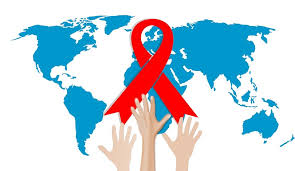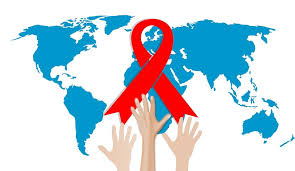
Dailycsr.com – 31 December 2019 – The “Qualcomm® Wireless Reach™” strategically reaches out to “underserved communities” across the globe to provide them wireless technology. The said initiative funds programmes that encourage entrepreneurship, help in public safety, improve healthcare delivery systems, enhance environmental sustainability and promote better learning and teaching.
Qualcomm inventions empowering mobile technology have supported to create a better future for with the help of the internet it reached out to unconnected areas, brought education to places without school, provided financial services in place where banks didn’t reach besides reducing unemployment by offering jobs.
At present, hundred nineteen Wireless Reach programmes are being carried out in forty seven different countries, whereby touching the lives as more than eighteen millions through the Qualcomm technology. However, one notices great advancement in the field on “HIV and AIDS” prevention across the globe, especially in South Africa with the “largest HIV treatment program” in the world.
Nevertheless, social and other structural hurdles are responsible behind some adolescents and children still falling prey to these ailments. In order to address the same issue, the KidzAlive Mobilized initiative attempts to plug the gaps. With the help of wireless technology, the said programme provides training to healthcare workers, and supports “HIV-exposed and -infected children and adolescents”, so that more children can receive HIV tests and treatments for a promise of a healthy future.
Here are some of the challenges faced in this attempt, as mentioned by Qualcomm:
Qualcomm inventions empowering mobile technology have supported to create a better future for with the help of the internet it reached out to unconnected areas, brought education to places without school, provided financial services in place where banks didn’t reach besides reducing unemployment by offering jobs.
At present, hundred nineteen Wireless Reach programmes are being carried out in forty seven different countries, whereby touching the lives as more than eighteen millions through the Qualcomm technology. However, one notices great advancement in the field on “HIV and AIDS” prevention across the globe, especially in South Africa with the “largest HIV treatment program” in the world.
Nevertheless, social and other structural hurdles are responsible behind some adolescents and children still falling prey to these ailments. In order to address the same issue, the KidzAlive Mobilized initiative attempts to plug the gaps. With the help of wireless technology, the said programme provides training to healthcare workers, and supports “HIV-exposed and -infected children and adolescents”, so that more children can receive HIV tests and treatments for a promise of a healthy future.
Here are some of the challenges faced in this attempt, as mentioned by Qualcomm:
- “HIV/AIDS remains one of the largest international public health crises. HIV exacts a significant socioeconomic toll, particularly in countries with a high burden of the disease.
- “An estimated three million children and adolescents (0-19 years) were living with HIV in 2017, nearly nine in 10 (87 percent) of whom live in sub-Saharan Africa. According to the World Health Organization, 73 percent of these vulnerable populations in sub-Saharan Africa are not receiving life-saving treatment.
- “Fear and stigma keep many HIV-exposed children and adolescents from being offered an HIV diagnostic test. Primary caregivers and healthcare workers (HCWs) are often afraid to have children tested because disclosing a positive result without the appropriate training and tools can can be very traumatic for the adults and children alike.
- “Evidence suggests that HCWs fail to provide young patients with HIV services, such as HIV Counseling and Testing (HTC), due to a lack of adequate knowledge, skills and confidence in dealing with children, adolescents and their primary caregivers on this topic”.
Below is a set of solutions for the challenges, provided by Qualcomm:
- “The KidzAlive Mobilized program aligns with South Africa’s 4th National Strategic Plan for HIV, TB and STIs 2017-2022. The plan prioritizes customized and targeted interventions to accelerate progress in reducing illness and death associated with HIV, TB and STIs among all key and vulnerable populations, including children and adolescents.
- “The KidzAlive Talk tool, originally a paper-based HTC tool developed by Zoë-Life and widely used by the National Department of Health and community-based organizations, has been adapted into the KidzAlive Talk Tool App.
- “The Talk Tool App is a job-aid, empowering HCWs to provide age-appropriate HIV education to children, adolescents and their primary caregivers. It helps ensure that children who are HIVnegative stay negative and that those who are HIV-positive are supported to lead healthy lives.
- “Through the App, children learn the heartwarming story of an animated frog, Sibusiso, as he discovers in a fun and non-threatening way his HIV status and the importance of adhering to his treatment. The App also features interactive games which keep the children focused and engaged throughout the counseling session.
- “In a pilot study, 33 HCWs at private- and government-healthcare facilities in 11 sites in Gauteng and KwaZulu-Natal were provided Qualcomm Snapdragon™-enabled Lenovo Tab 4 10 tablets loaded with the Talk Tool App, as well as ongoing training and mentoring on their use. The HCWs used the App to provide age-appropriate HTC, status disclosure and health education to children and adolescents and their primary caregivers at clinics, during home visits and in early childhood development centers”.
Moreover, Qualcomm also highlighted the impacts of its efforts:
- “Improvement in Provider Confidence
- “After receiving training on the App, HCWs in the pilot study experienced a 62 percent increase in confidence and competence in providing ageappropriate, children-centered counseling, disclosure and care for HIV-exposed and -infected children.
- “Increased Uptake of HIV Testing
- “Primary caregivers participating in the pilot study were more willing to give consent for their children and adolescents to receive HIV testing and counseling.
- “Retention of Information
- “The interactive games offered on the App increase children's retention of information and leads to a safer, more positive understanding of their HIV status.
- “Effective Identification of HIV-Positive Patients
- “In the pilot study, 280 children and adolescents were provided HIV testing and counseling via the App. Seven percent of these patients were identified as HIV-positive, far exceeding the national average of two percent.
- “Strengthened Access to Treatment & Care
- “100 percent of children and adolescents who tested positive in the pilot were referred to a clinic for HIV care and treatment services”.
References:
3blmedia.com


 Qualcomm Addresses HIV Prevention Wirelessly In Underserved Communities
Qualcomm Addresses HIV Prevention Wirelessly In Underserved Communities




 Companies
Companies